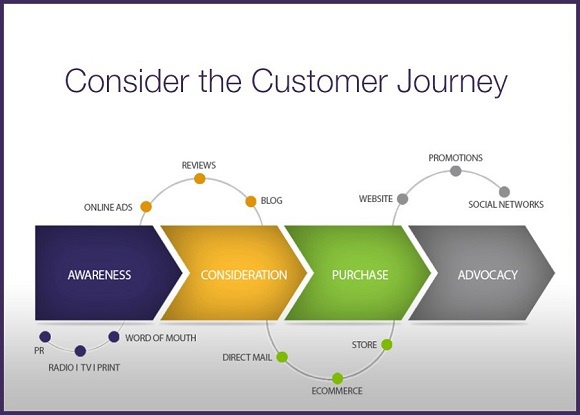 Knowing ones marketing goals will help work toward achieving better results
Knowing ones marketing goals will help work toward achieving better results
Digital marketing gives huge opportunities to businesses in Ghana. Many small businesses interact and engage their customers more than ever before. Yet, it is also giving small business owners headaches calculating digital marketing efforts.
This is because, in the past, Ghanaian business owners only had to worry about TV, radio, billboards and print. Now there are many digital channels and the data collection sometimes is overwhelming.
In 2015, Ghana had 35,283,957 telephone subscribers, which represented a teledensity of 129.63 percent.
Mobile Data subscribers, as of December 2015 stood at 18,031,188, representing 65.74 percent. Out of these numbers, there are over 4 million active Facebook users alone in Ghana.
To take advantage of this data you need to know the best way to invest in your digital marketing efforts and also how to calculate your efforts to save time and money.
In this article, I will show you how to calculate your digital marketing efforts even as a small business. Are you ready? Let go!
Step One: Establish Digital Marketing Goals
Before calculating your digital marketing efforts be strategic, not tactical in your thinking. How do your digital marketing activities connect to your business goals? Are you trying to increase online sales? Grow your brand equity? Are your goals long term or short term?
Determine which part of your marketing effort you are most trying to improve. For example, a common near-term goal for digital marketing activities is to grow revenue from digital channels.
In this case, the link from your digital marketing efforts to your business goals will run through one of these metrics in this simple equation:
Traffic x conversion x order value = digital revenue
This equation can help you identify your goals.
Efforts that aims to increase near-term digital revenue is likely to affect one of the three metrics above.
A better user experience on your website should improve conversion rate. Example, a customer calling a sales rep or buying an item online or downloading a guide.
Digital marketing activities can lead your brand advocates to share content with their friends. Attracting those that are most likely to buy or spend more.
Step Two: Determine the Key Performance Indicators (KPIs)
After setting your business goals, determine what the most important metrics are for your business. You will have to decide what you are going to calculate or measure.
These should be trackable over time to show improvements or losses.
In determining the KPIs the most important word is ‘Key’. Your KPIs should be a selected group of metrics that help maintain focus on what’s important.
These are some of the most important metrics to consider;
- Number of website traffic
- Number or value of sales
- Conversion rate
- Customer Acquisition Cost (CAC)
- Number of leads (Potential Customers)
Step Three: Consider the customer journey

The customer’s journey is a winding path. Generally, the average smartphone user accesses on average four digital sources before buying.
They go through various stages from reading an article to downloading a video before finally walking into a shop.
A customer journey map, based on an ideal customer helps identify activities needed to attract the right customers.
Activities such as sales or a sign-up are easy to track. But, micro activities such as reading a blog that leads to macro events such as sales are limitless.
How do you know which ones are most likely to drive macro activities? which ones can you influence, and what are the best ways to prompt them? You need to track these micro activities that lead to macro events. This requires sophisticated tracking systems like google analytics.
Let’s consider four major analysis:
- Attribution analysis helps in understanding what the critical micro events are. Where are traffic and conversion are coming from? direct search, social, mobile, e-mail, display, online chat?
- Search analysis helps you understand what customers are looking for when they reach your business and their intent. What words are customers using to find you and at what stage in the buying cycle? Which ones lead to higher conversions? What new opportunities or customer segments can you identify?
- User behaviour analysis helps you see where your customers are getting stuck in the customer journey. What are the behaviours of site visitors? What are their navigation paths through the site, how long are their sessions, where exactly do they abandon?
- Sentiment analysis helps you understand how your customers see you in the marketplace. What are customers saying about the brand? Are what they are saying positive or negative? What influence is that sentiment having on potential customers?
Step Four: Calculate Your Marketing Efforts
Once you’ve chosen a goal and tracked the metrics, it’s time to tackle the cedis of Return on investment (ROI). ROI is the gain or loss generated on an investment relative to the amount of money invested. There are several different methods to choose from here:
Lifetime value (LTV)
Lifetime value (LTV) is how long the average customer stays with you before they stop doing business with you. The longer a customer stays with you, the more valuable they are.
To do this, look at your churn rate. Church rate is the number of people who stop doing business with you in any given period. Let say you are DSTV and you have 1,000 customers. And every month 20 of them cancel their subscription, that works out to two percent monthly churn. By this value ( 1 / Monthly Churn ), you can calculate how many months your customers will stay with you. At a 2% monthly churn, that works out to 50 months (4 years, 1 month)
You will also need to know your Gross Margin % (the percentage of profit that remains after you have paid your costs for the product or service), and then how much money the average customer brings in each month.
Lifetime Value = Gross Margin % X ( 1 / Monthly Churn ) X Avg. Monthly Revenue per Customer

So, for example, if you had a gross margin of 75% and monthly customer churn of 2% and each customer spent an average of Ghc 40 with you every month, the calculation would look like this: 75% X ( 1 / 2% ) X Ghc 40 = Ghc 1,500 LTV
Customer Aquisition Cost (CAC)
Now you know the lifetime value of your customers. Let now turn attention to calculating how much you spend acquiring a customer.
The customer acquisition cost (CAC) means the price you pay to acquire a new customer.
To calculate it, divide your entire sales and marketing budget by the number of new customers acquired in a given period.
Customer Acquisition Cost = Sales and Marketing Costs / New Customers Won
If your total marketing expenses are Ghc 20,000. And you acquired 50 new customers in a given month, the calculation would look like this: Ghc 20,000 / 50 = Ghc 400 CAC
Ideally, the value of a customer should be three times more than the cost of acquiring them.
Average daily sales
You may also be interested in daily performance. Your average daily sales are the number of sales your business generated in a given period.
To calculate your average daily sales. Let assume your business generated GHC40,000 in annual sales last year. Now divide your annual sales of GHC40,000 by 365 to get GHC109.59 in average daily sales.
Average daily sales = Annual sales /number of period
Website Traffic Lead Ratio
The Website Traffic Lead Ratio tells you how many of your website visitors convert to leads. This KPI is useful because it tells you the quality of your website traffic. It is especially important for businesses in which the website serves as a major business tool such as e-commerce.
This is the formula;
Website Visitors: leads = website lead ratio
100,000 Website Visitors: 5,000 leads = 5% conversion
Step five: Make decisions based on your analysis, then adjust
Calculate your digital marketing efforts to improve decision making. The analysis you make from your calculations is only as good as the actions you can take with what you find.
Be agile, use the results to test and find out what works. Look for continuous improvement.
In conclusion, figure out what you want to calculate and where you can track it. Think about both current customers and new customers, and go do it.
Your Turn,
What questions do you have about calculating your digital marketing efforts? Which methods do you use to track things? I’d love to hear your thoughts in the comments.